The Willow Pump is the holy grail for busy, working and multitasking moms – and it has all the reasons to be. This is a hands-free and wireless pump that’s designed to stay hidden in your nursing bra as you work on your desk, take a walk or do the laundry. Okay, that’s what it’s supposed to do on paper.
But does it really work as advertised or will it be just another costly pain in the neck? In my Willow Pump review I hope to answer all your questions from how it works to whether or not it’s a worthy investment.
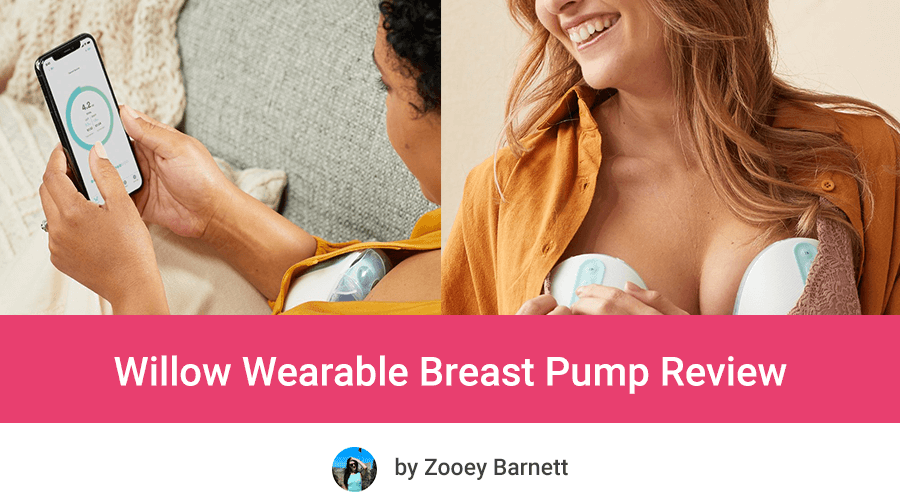
This article contains affiliate links.
Willow Pump – What Exactly Is It?
This pump, currently in its 3rd generation, is a complete overhaul of the modern electric double breast pump. It compresses the entirety of an electric pump into a small bra-cap shaped unit. Each of its two pieces has a built-in motor, rechargeable battery, flange, funnel, and milk bag.
With Willow Gen. 3 you can also replace the milk bag (used for pumping and storage) with a reusable milk container. Although you need to pay extra for it, it’s more budget-friendly option in the long run than disposable bags.
Unlike a regular electric pump, the Willow does not have dangling cords and tubes running in and out of it. This is because the milk collection bags/containers are contained in the pump. And this is what makes it possible to tuck the pumps under your nursing bra and leave them there to do their thing as you work on other tasks.
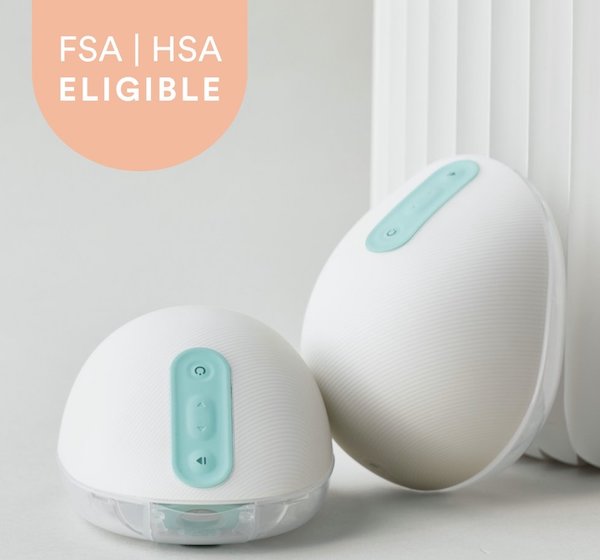
Lots of moms who have been using Willow for a while now, say that although this pump is not flawless, it’s a life-saver because it allows new moms and moms who have also older kids too run around after, to multitask and have some much-needed hands-free moments.
What You Get In The Package
Below you can see the content of the basic package (you can read more about each part in the next paragraph).
I highly recommend you to get Willow on brand’s official website (-> HERE), because this way you can be sure you’re getting the original product with full warranty.
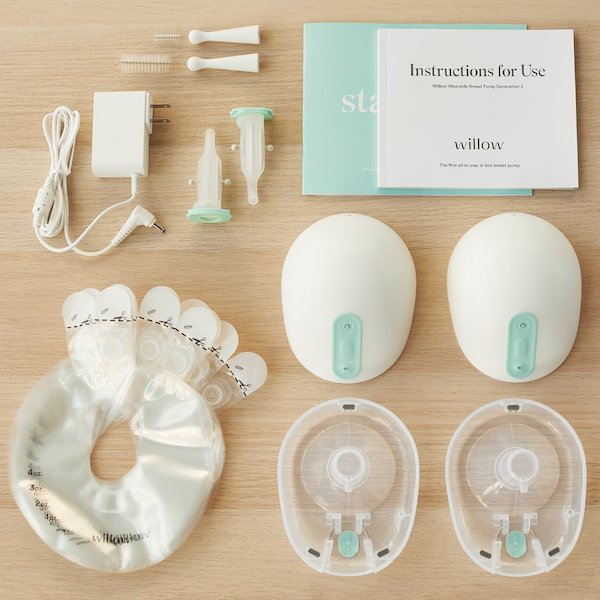
So here’s what you will receive:
- 2 x pumps with built-in motor – for pumping both breast simultaneously
- 2 x 27-mm/ 24-mm/ 21-mm/ 19-mm/ 17-mm/ 15-mm flanges – you need to choose which one will fit your nipples better
- 2 x flextubes
- A pack of 24 spill-proof milk bags
- 2 x cleaning brushes
- 1 charger
- Willow Pump manual
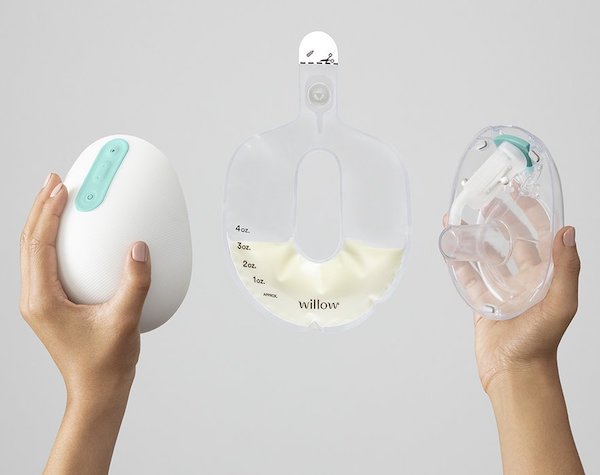
Elements of the Willow Pump Gen 3.0
1. Motor (Strength & Performance)
The motor is located in the bra cap-like outer shell. It makes 60-90 cycles/minute and has a vacuum strength of 35-245 mmHg. Most moms don’t care so much about these figures, but they matter a big deal when choosing a breast pump that will work for you. Allow me to explain, starting with the cycles.
Now, without digging too deep, most of the best breast pumps for personal use have speeds ranging between 45 and 55 cycles. This is because they are designed to mimic a baby’s sucking pattern that falls within that range. Lots of experts say this speed is good for occasional expressions. Having a pump that goes as high as 90 cycles per minute, like the Willow 3.0 is a good thing, though, in that it hastens the stimulation phase, thereby leading to a quicker letdown and a shorter but efficient pumping session. It’s a good speed for moms pumping exclusively or stimulating lactation.
The other value, suction/vacuum level, refers to the strength of the suctions measured in millimeters of mercury (mmHg). Most personal grade pumps fall in the range of 0-200 mmHg, while hospital-grade ones reach vacuum suctions of over 300 mmHg.
That’s because they are designed for rigorous use. You’ll rarely need all this suction with Willow 3.0 pump. But this gives you a gist of the quality used for the motor.
So, if you’re wondering “Is the Willow pump hospital grade?”, the answer would be: no, but it’s almost as strong as hospital-grade pumps.
| SALE ALERT MAY 2023: All Willow pumps and accessories are now on sale, but only for 3 DAYS! You can get your Willow 3.0 pump $110 OFF which is the lowest price since Black Friday sale last year! Don’t miss out on this opportunity. The discount is available only here with code AFFILIATE20 👈 (use it at checkout). |
2. Battery
Each of pumps has a separate built-in rechargeable battery and a charging port towards the bottom. These batteries take around 2 hours to charge fully, and there’s a color-coded battery level indicator on the ON/OFF button to show you the amount of charge remaining. Red = low battery, Orange = enough charge for one session, and Green = enough charge for 2+ sessions.
When it’s fully charged, Willow 3.0 pump can last up to 5 pumping sessions. This is enough power to take you throughout the day, assuming that you pump every 3-4 hours.
Keep in mind that it only comes with 1 charger. In that case, it may be necessary to buy another charger to charge the 2 pumps at once. Some moms complain that they can’t charge two pumps simultaneously so the charging time automatically doubles. Unless you pay extra $29.99 for the second charger.
3. Controls
The blue part on the pump is the control panel. The first button from the top is the pump/pause. The two buttons in the middle let you increase and decrease the suction strength to your comfort level, while the last button switches the pump ON/OFF.
4. Flanges (Updated: MAY 2023)
This is the part that comes into direct contact with your breast and where you fit your nipple in. Willow’s flange is available in 6 sizes: 15 mm, 17 mm, 19 mm, 21mm, 24mm, or 27 mm. The smallest flanges have been recently added to their collection which is a fantastic news. Not many electric pumps offer small flanges.
It’s crucial that you get the right size to prevent sore nipples and frustrations.
| PRO TIP: If you’re dreaming about getting Willow hands-free pump, I recommend you to order it from brand official website to be sure you’re getting original product with full warranty (besides, supporting small innovative brands is so important now!). On brand’s website you can learn how to choose the right size of flanges – which is crucial for the satisfactory milk volume. >> Check the sizing guide << |
5. Flextubes
The Flextube is what carries the expressed milk into the milk container. Willow recommends cleaning the Flextubes after each session. For a working mom who may not be able to do so, having extra Flextubes handy may prove very helpful although they come at an extra cost. The good thing is that Flextubes are dishwasher safe and of course BPA-free.
6. Milk Bags
With Willow 3.0, you can use either disposable 4 oz. milk bags (included) or reusable container (sold separately). This is an incredible improvement over the previous generations (1 and 2) that use plastic bags only.
Let’s focus first on the milk bags which are included in the package. You get 24 bags with your Willow Pump.
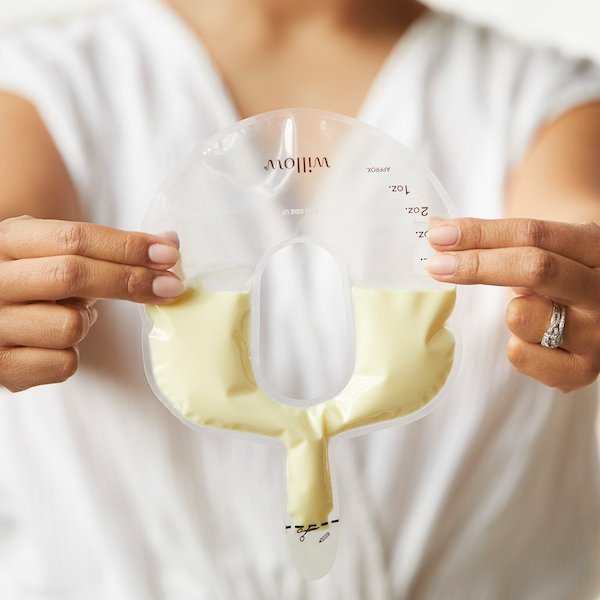
What you’re going to appreciate about these bags is that they are 100% spill-proof. Secondly, you can toss them in the refrigerator immediately after pumping without transferring the milk to another container. For the pumping session, you simply connect them with flanges, Flextube and the pump. When you’re done, you dissemble everything and put the bag into fridge or freezer – you pump and store the milk in the same bag.
The major downside is that they are darn expensive. Assuming that you use 6 bags every day (3 pumping sessions each with 2 bags), then a pack of 24 bags will be taking you for around 4 days. If you’re on a budget and want to track every buck, I bet this will be enough to drive you crazy. Getting a pack of 48 milk bags will cost you $29.99 extra.
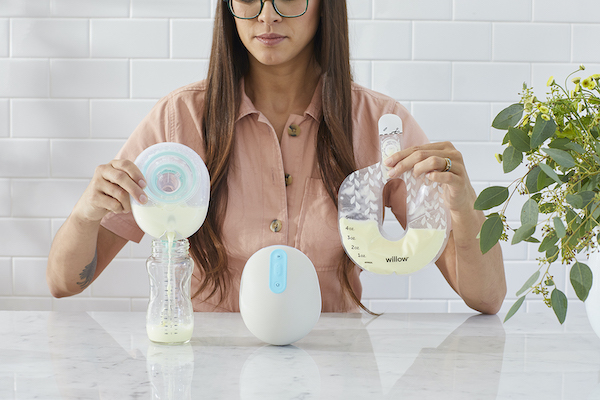
7. Reusable Milk Containers (Sold Separately)
Fortunately there’s a cheaper solution than milk bags – which will be beneficial especially for moms who are EPing.
Luckily, Willow 3.0 now has a reusable container. Again, the design of this container allows you to transfer the milk into a storage bottle and reuse it after cleaning. Of course the milk bags seems to be more convenient to use, but in the long run, reusable milk container is more budget-friendly option.
If you decide to get these containers (the pack includes two – one for each breast), you will have to pick them in the right size – similar to the breast flanges: 21 mm, 24 mm or 27 mm. They are dishwasher safe, BPA-free and can hold up to 4 oz. of your milk.
The good news is that if you have smaller nipples, you can still use the milk containers, you just need flange inserts that will ensure perfect fit and comfortable pumping (available in sizes: 15/17/19 mm).
| PRO TIP: You can see their current price and how they connect with Willow Pump on Willow Official Website. |
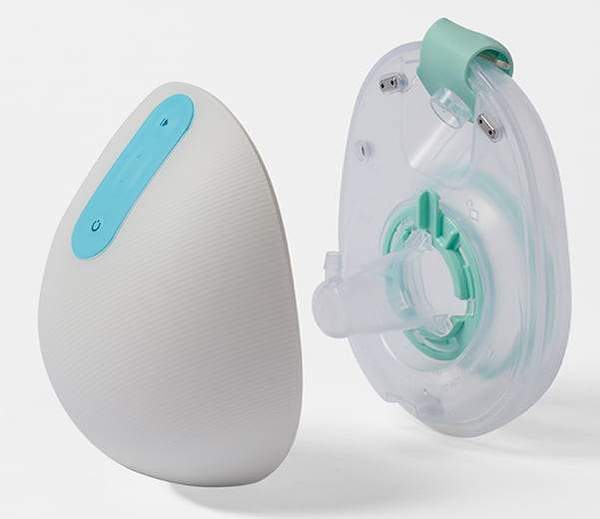
How The Willow 3.0 Works
Setting It Up
The Willow 3.0 sets up in a breeze, and the instructions in the manual booklet are nicely detailed with drawings to take you through. Even after going through this Willow Pump 3 review, I highly recommend that you go through the manufacturer’s guide for more insight on how to use the Willow Pump.
All in all, set up simply involves attaching the tip of the flextube to the flange spout and onto the milk bag on the other end. Next, tuck in the bag nicely, ensuring that there are no folds.
Attaching The Flange To Your Breast
With the milk bag in place, align your nipple correctly into the flange tunnel making sure that your erect nipple doesn’t touch any side of the tunnel. Then attach the main unit (outer shell) and hold the pump firmly against the breast.
Latching & Pumping
While firmly holding the pump against your breast, press the pump/pause button to create a good latch and start pumping. The motor makes louder, slower sounds when establishing suction. Hold the pump for a few more seconds until the motor transitions to stimulation mode before securing the bra. Stimulation mode is characterized by short, quick sounds.
Luckily, the Willow Generation 3 takes two minutes to transition from the stimulation phase to expression mode. This is unlike generations 1 and 2 that take 5-7 minutes. Expression mode features slow, quiet modes.
| IMPORTANT UPDATE: Willow has just released new cheaper breast pump which has more delicate vacuum with more comfortable sucking pattern. Check out my review of Willow Go or find out how to get it for as low as $150 with insurance. |
Removing The Collection Bag / Container
The Willow pump takes around 25 minutes for each session. Each session produces around 5 ounces of milk, which is an ounce more than what Willow 1.0 produced.
After 25 minutes of pumping, the motor will pause to allow you to remove the milk bag. If you’re an oversupplier, you may want to replace the bag and continue pumping.
How To Clean The Willow Pump
This is one of the critical areas where Willow makes pumping a whole lot easier. Once you remove the collection bag for storage, you’re left with only 2 flanges (or 2 milk containers) and a pair of flextubes to clean.
Willow moms advise soaking the 2 parts in warm soapy water for at least 5 minutes and then washing and brushing thoroughly. These parts are dishwasher-safe too.
Willow Pump Gen 3.0 – Safety Tips
- Don’t share your pump with another user.
- Clean and sterilize the washable parts after each use.
- Don’t wash the motor. Wipe it clean with a damp cloth.
- When fitting your erected nipples in the funnel, make sure that they don’t touch any side of the funnel, as this may leave you with sore nipples. If the flange is too hard on your nipples, then the chances are that it’s too small for you.
- After pumping, be sure to break the latch before removing the pump from the breast.
- Avoid harsh cleaning chemicals when cleaning the flange and flextubes.
- Allow the washable parts to dry before storing.
Willow 3.0 App
The Willow Gen 3 app offers real-time data on your pumping progress, including the amount of milk pumped, current phase, and suction level. It also shows the battery level on your pumps besides helping you to track your pumping history. Keep in mind that since Willow Pump is only available in the US, the app is also available only in the US.
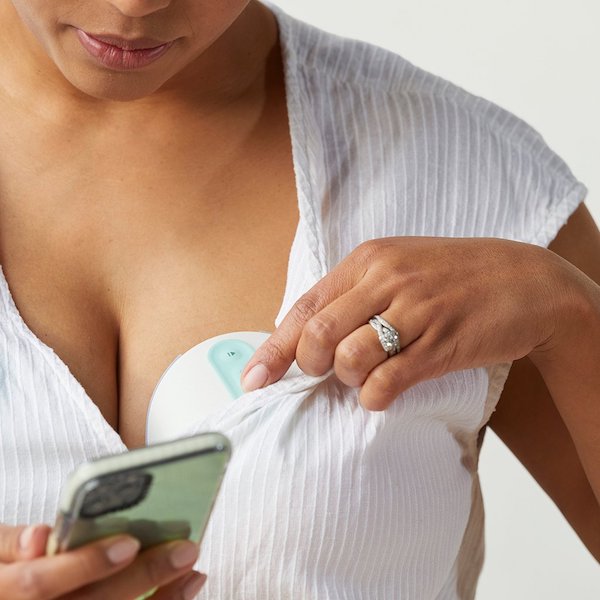
Unfortunately the app does not allow you to control the pump from your phone. Honestly, being able to lower or increase the suction without reaching for your breasts in public would make a tremendous difference. Hopefully the developers will work on this function soon.
Secondly, the app is sometimes inaccurate when recording the amount of milk pumped. Therefore you will probably need a different app (or a small calendar) to record your pumping sessions correctly.
Despite these issues with the app, I still think the Willow Pump is helpful and super convenient for new moms who like multitasking.
Willow Pump 3 vs 2 vs 1
Recently I’ve received a lot of questions about this pump. Moms usually worry that Willow suction will be too strong for them. It’s quite a common opinion that this pump is really strong. It’s probably because of all those reviews on YouTube that present Willow as stronger than majority of other pumps. Unfortunately, moms in these videos usually don’t talk about which generation of Willow they’ve been using. And in most cases it’s the generation 1 and 2 – because the Willow 3 has noticeably more gentle suction.
I decided to add a quick comparison of these 3 versions for all those moms who feel confused. The brand did a really good job with the latest upgrades for generation 3 and I think it’s worth to show them.
Willow 3.0 or 2.0 or 1.0? – Major Differences
- Flanges – First generation of this wearable pump had opaque flanges which caused a lot of problems with proper alignment for many moms. Moreover, they used to attach to the pump with clip-ons and this mechanism was not very sturdy. The brand fixed these issues for the second and third generations, which come with clear flanges that attach more securely using magnets.
- Reusable Container – Only the 2nd and 3rd generation are compatible with Willow reusable milk container, which eliminates the need of purchasing tons of disposable plastic milk bags. In the long run it’s a more affordable solution. (*I know that some moms have hacks for making the first generation compatible with the container, but I’m not going to discuss it here.*)
- Suction – Willow 3 has new slower and softer pumping suction (the brand calls it “sensitivity setting” and I think it’s very accurate name). With Willow 2 and 1 lots of moms were using only the section level 1 because it was strong enough, but some mommies thought the level 1 was TOO STRONG. Many moms were not using higher levels because they would cause pain and nipple soreness. So if you’re wondering “Does the Willow pump hurt?” I’ve got a good news for you. Willow suction has been changed with the 3rd generation! The vacuum feels much more gentle now and adjusts better to what your body needs. But even with gentler suction this pump still allows you to express nice amount of milk, and the manufacturer even says you can get 20% more milk (of course this will highly depend on your milk supply, your sensitivity and how your body reacts to different suction levels). With the suction improvement I think the Willow 3.0 is worth the money.
| IMPORTANT INFO: 1st and 2nd are no longer available, only the new improved Willow 3.0 is available on brand’s website << |
Willow Breast Pump Insurance
Moms frequently ask whether Willow Pump is covered by insurance or not. Majority of companies cover most of breast pump models now, thanks to the Affordable Care Act (ACA). However, the situation with Willow is a bit different, and one reason for that is of course its price…
The truth is that insurance companies have different policies, but some moms were able to get Willow Breast Pump via their insurance. Usually the insurance companies partially cover Willow. You will need to fill out some papers and provide Willow with a few information, but you should be able to get a partial coverage ($95 – $150).
The best option is to call your insurance company and check what they can offer you, maybe you’ll get lucky and you’ll receive Willow Breast Pump insurance coverage.
Pros & Cons
How Does The Willow Differ From Manual & Electrical Pumps?
Compared to a manual pump, the main advantage that Willow 3.0 pump offers is its hands-free and automatic operations. You don’t have to keep squeezing a handle to pump the milk. This makes it much more convenient and less strenuous, especially if you plan to pump often or exclusively. Also, although Willow is much more expensive compared to even the best manual pump in the market, it tends to save you lots of time and energy that you can utilize on other tasks.
This does not disqualify the need for having a manual pump in your arsenal, though. For moms who choose to pump exclusively, it’s advisable to have a manual pump handy just in case Willow is out of power or you’re out of milk bags, just when you need to pump.

Comparing it to most electrical pumps, the main benefit that you’re getting with Willow is improved portability. It’s undeniable that most typical electrical pumps today are designed with portability in mind. However, lagging around the motor, cords, tubes, bottles, and flanges tends to minimize the level of convenience. What’s more, remember that if the pump requires to stay plugged in, you’ll need to plan for a discreet room with a socket wherever you plan to pump. Moreover, many electric pumps have louder motor than Willow has.
Even though the size of the Willow Pump is something that you should consider, it’s still much more discreet than any other electric pump, because it doesn’t have a large motor that everyone could see. If you wear a loose sweater none may even notice that you’re using a breast pump!
Willow vs Elvie Pump – Which One Is Better?
Willow and Elvie are among the best in-bra pumps that tend to be compared a lot. Now, before the debut of Willow 3.0, the major downsides of Willow were: the ongoing cost of the milk collection bags and the suction being too strong for some moms.
For the new Willow pump the brand offers a reusable container to avert the first issue. Moreover, the pump Willow 3 is more gentle and delicate!
Another difference between Willow and Elvie is the design of each unit. Elvie is designed in a way that allows you to swap one pump between both breasts. On the other hand, Willow has a designated pump for each breast. Lastly, of the two, Elvie has a slightly slimmer design.
Deciding which wearable pump is better – Elvie or Willow – is mostly the matter of your preferences.
>> Read more detailed comparison of Willow, Elvie and Freemie
Who Will Benefit Most From The Willow Pump?
Considering its high level of convenience, I believe the Willow Pump Gen. 3 will be an incredible choice for anyone who can afford it. If you’re a mom who works at home, this machine will interest you if you want a machine that literally ticks off one of the tasks in your to-do list. While Willow is taking care of the pumping, you can spend time playing with your little one.

It’s also a very convenient solution for mom who have older kids to run around after. Willow gives you hands-free moments during which you can play with or read to your toddler or preschooler. Of course it will also allow you to have a moment just for you.
For office workers, the quiet operations of this machine allow you to pump as you work on your desk. Moms rather agree that it’s not a good choice to wear your Willow during a meeting with your boss, but you’re free to use it when you’re sitting in your office space on your own and working on your computer.
If you’re afraid someone will see that you’re wearing in-bra pump, you can always use a nursing cover, baggy t-shirt or sweater to hide the pumps if you want to.
| PRO TIP: According to moms who have been using Willow, the pump is most comfortable to wear with this Simply Sublime Nursing Bra from Kindred Bravely. It provides everyday comfort and makes pumping (and nursing) easier and more convenient. It’s adjustable, comes in 5 sizes and various beautiful colors. This Willow bra is more affordable than other nursing bras. |
The Willow Pump also saves you a lot of hassle when traveling thanks to its portability and in-bra operations. Importantly, Willow advises not using it during takeoffs and landings.
The Willow is also super easy to clean because it has less parts. For moms who often express milk this may be an important feature.
And considering all the safety tips from lactation experts, Willow will be probably the best choice for moms who have established lactation and want to part regularly or even exclusively.
What Other Moms Say – Willow Pump Reviews
Starting with the most satisfied moms, Willow tends to get a lot of praise mainly because of its hands-free operations. As expected, moms appreciate that they can tend to other tasks while pumping. Parents who work away from home also like that this pump is super quiet compared to others. They say that they are able to use it while at their desks and amidst their colleagues. I also came across some moms who say that Willow has increased their milk supply significantly.
On the flipside, almost all moms who have written Willow Pump reviews, agree that it has a learning curve to it and it requires getting used to. But if you’ve done some research on various breast pumps already, you should know that ALL of them take some time to get used to and require practice before you master using it.
Secondly, the fact that Willow 3.0 requires some amount of milk to transition to expression mode has frustrated moms with low milk supply. On a side note, if you have issues with low breast milk supply you should definitely seek for an advice from a certified lactation expert, who may recommend you for example hospital-strength breast pump.
Also worth mentioning, not all moms like the disposable collection bags (which may get filled with air), however the good thing is that now Willow offers a reusable milk containers which are more cost-effective option for moms who express their breast milk frequently.
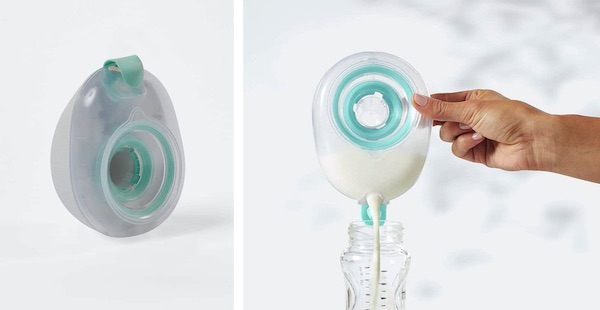
According to majority of users, the benefits of Willow outweighs those small issues and for many new moms and moms of multiple children this pump has been a game-changer.
Something To Keep In Mind
You will need a flexible budget to get some extras – when you buy it, you may find it necessary to purchase extra flextubes, reusable containers, disposable bags, and even an additional charger. However, dozens of moms who have been already using Willow Pump, agree that its convenience of use and the comfort it offers, make it worth the investment.
Also, it’s good to remember that the pumps may give your bust a kind of oversized look, therefore some moms recommend wearing loose clothing.
Why You Will Love Willow Breast Pump
| 1. There are no tubes, no cords and you don’t have to be tethered to a wall socket when pumping. 2. This pump gives you the convenience of emptying your breasts as you carry on other tasks. 3. You can comfortably wear it totally hands-free while getting some chores done or even while working in your office. 4. You can move with this pump much more easily than with other models, so it’s a perfect choice if you travel a lot. 5. It’s quiet and easy to clean – similar to manual pumps – but so much faster than that type. My rate: |
This article is not a substitute for medical consultation or medical care. Remember: safety first! Before you start breast pumping and/or have any doubts about your or your baby health condition, consult with a qualified lactation advisor and/or your GP!
| Your trust is really important to me: This post contains affiliate links. If you choose to buy something using these links, I may receive a commission, at no extra cost to you. Your support helps me run this blog. Thank you so much 🖤 |
Pictures belong to Willow. Source: https://shop.willowpump.com




I bought the Willow Pump for my second child and our breastfeeding journey. Worked great for the first two months then after that it was definitely a waste of money. The pump would read the wrong amount of milk pumped, for example it would read I have pumped 4.3 oz and that the container is full but really I have barely pumped about 2 oz. And it does this EVERYTIME. I reboot the pumps, I’ve purchased new containers and they are expensive to replace. I am still getting the same wrong error. It’s frustrating that you can’t really clean between the flex tube & the container. Parts to replace are expensive on top of paying $500 for the pump. Your better off with the usual medela pumps. The suction through time starts to weaken and doesn’t pump all the milk out. It’s a waste of money.
I have to agree with Bamb’s review. Please, new moms, DO NOT waste your money. Sure, for the first 2-3 weeks, it works like a dream but after that you will be in tears with the frustration they cause. The bags constantly get extra air in them and the pump turns off. Not to mention how expensive and often you would need to purchase them. The containers are amazing at first but they go bad after 3 weeks (if that). Trust me, I know, I have over 6 sets of containers. I wanted this to work so bad bc I invested over $600 in these pumps, but it’s not worth it Moms! Due to the issues, it’s negatively effected my milk supply. You won’t read a bad review on Willows site or social media bc they remove them. I wish I would have read some other forums before purchasing. Go to Amazon and read the reviews for the containers and pump. You’ll get a better picture of the issues. I’m just a mom trying to help other moms and save them the frustration and tears I’ve experienced with these pumps.
I’ve had the Willow about 9 months now but only really using it for about 8 months. Honestly, I’m so disappointed with this product, it’s sad. I haven’t reached out to Willow or posted a ton of reviews. That’s just not my thing. Then, as I sit here and fight with these stupid pumps, I started thinking about all of the women who are going to come behind me. Women who have just given birth, women who are trying to feed their babies, women who are desperately trying to do it all and I feel bad for them. I don’t want them to experience this. This frustration, the frustration of dealing with this pump, is too much. So unnecessary.
There are have times when this pump has been convenient. When all the stars align just right and the pump actually works. It does what it’s supposed to do and I’m grateful to be hands free and not chained to a power outlet. However, the majority of the time, something will go wrong with this pump. To be specific, I don’t think it’s the pump as much as it is the equipment needed to use the pumps. The pumps are already so expensive (I felt MAJOR guilt over purchasing them after having a new baby) and then the accessories/equipment are even more expensive! The bags are ridiculous and the containers are even more ridiculous. I find it VERY HARD to believe it costs Willow anywhere near $50 to manufacture those containers. Then (here’s the kicker), the containers only last a few months! You have to purchase them AGAIN when they wear out after 90 days or so. Then you’re stuck, here like I am, trying your best to make this equipment work, and it failing over and over and over. After you spend an hour + fiddling with these containers or pumps, you will spend way more time “pumping” than you ever wanted to. Last night, I was in my car, missing my kids playing at the park, in pain from needing to pump, begging these stupid pumps to PLEASE work for at least 2 hours. The frustration, the failure, the stress, the insane expense, SO NOT WORTH IT. I will be going back to my trusty Medela tomorrow. Chunking these things in the trash and kissing my hundreds of dollars goodbye!
Thank you for the exceptionally detailed review of the willow 3.0. First time parents, and my wife is feeling stuck and isolated with her pump. She wishes she could do more normal things and not be connected. I feel confident surprising her, and hopefully giving her some freedom and time she deserves. Thank you for helping make the decision less of a pain and taking the guess out of it.
Hi Riki, I’m happy to hear that!
Here are some resources that could be useful for the first days with Willow 🙂
Willow Pump Tips & Hacks
Willow Container Hacks (Youtube)
How to do Flip To Finish with Willow (Youtube)